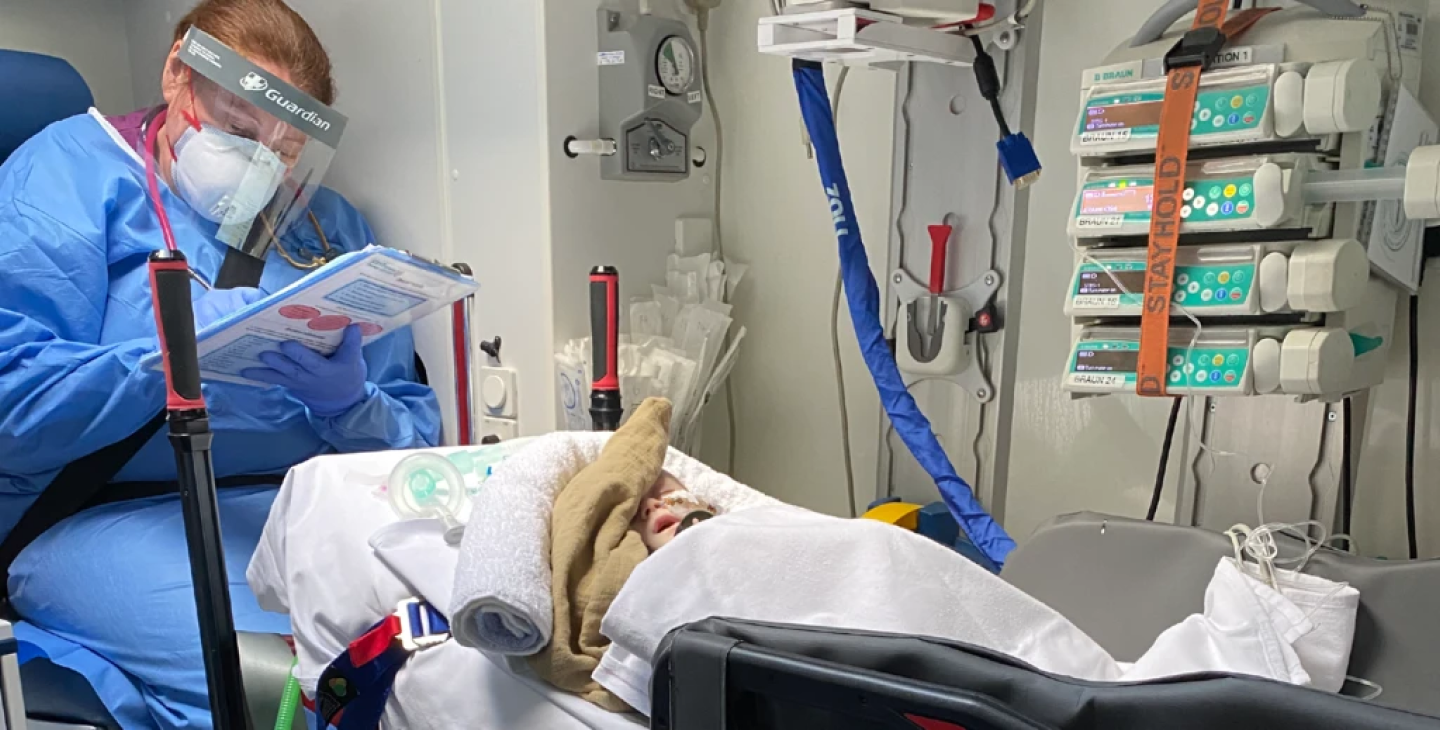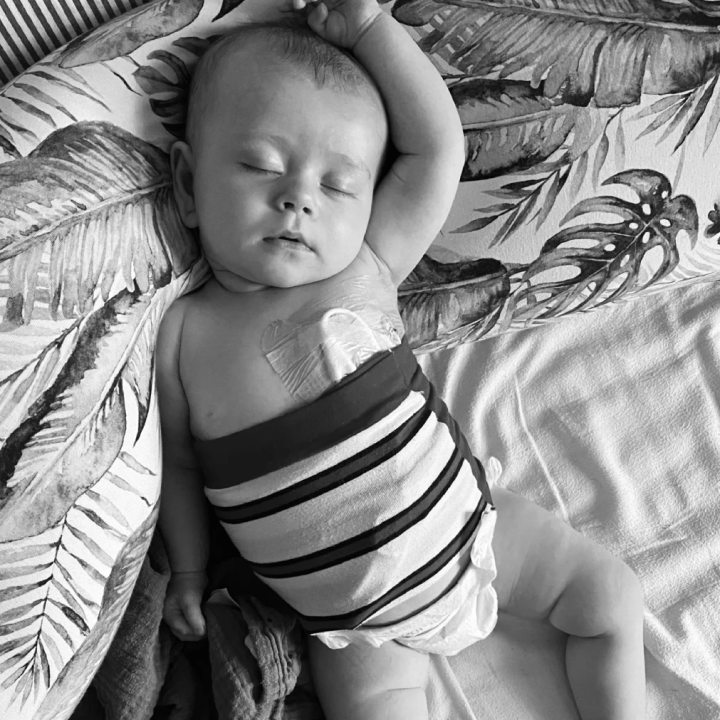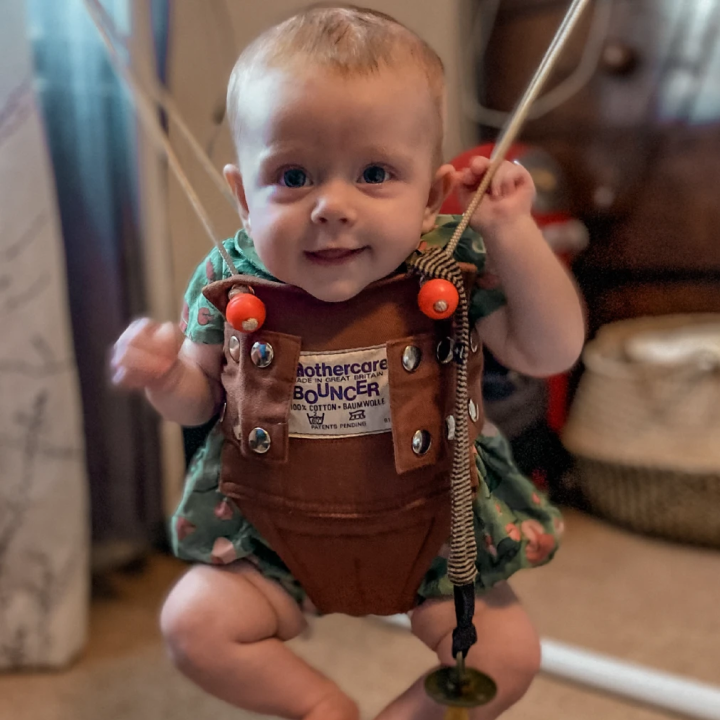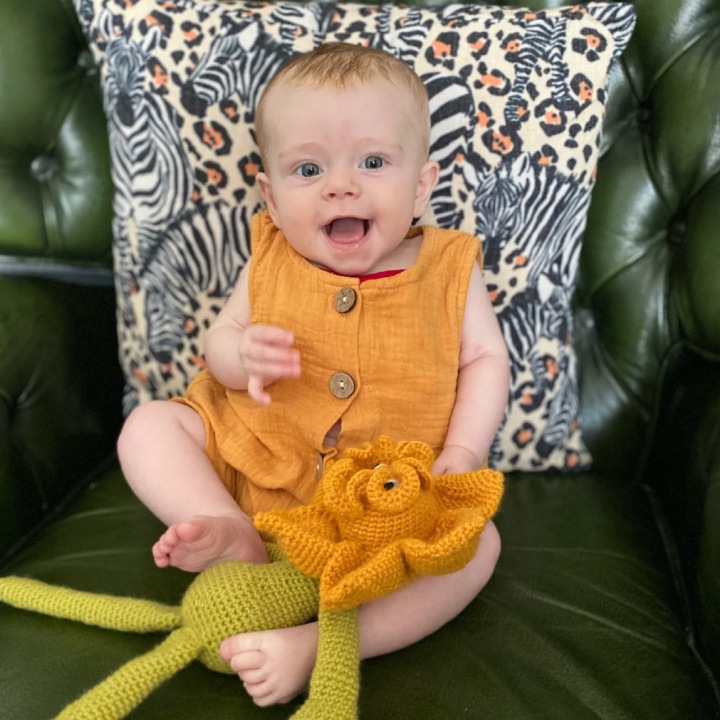How it all began
In February 2020, Michael and I were blessed with the safe arrival of our daughter, Theía Elsie Ann, who we soon nicknamed 'Tiny'.
For the first three months, we settled into a new routine, getting to grips with the roles and responsibilities of being new parents. But shortly after the standard eight-week GP check-up, we noticed that Theía's abdomen was beginning to look distended and was very firm to the touch.

Our concern mounted and so began regular calls to 111, the GP surgery and the Health Visitor.
After six weeks and multiple failed attempts to get Theía physically seen by a medical professional during the start of the coronavirus pandemic, our GP practice finally allocated us a face-to-face appointment where we were immediately referred to Kingston Hospital Pediatric A&E for an ultrasound.
The ultrasound established that Theía's liver was enlarged, but tests were inconclusive, with some doctors suggesting she could have a metabolic condition, requiring a liver transplant. Eventually, Kingston Hospital transferred care to Kings College Hospital for a liver biopsy under general anaesthetic for a definitive diagnosis.
Over a week passed as we awaited the results.
Our bright and beautiful daughter began to decline during this time, she stopped smiling, and her milk intake steadily decreased.
With no indication as to when the tests would be back from the lab, we rushed her back to A&E at King's - Theía was drifting in and out of consciousness, and her distended abdomen was still growing in size.

While in the children's A&E at the hospital, the consultant who performed the biopsy called us – Theía had neuroblastoma, a rare type of childhood cancer that develops from cells left behind from a baby's development in the womb.
It was a relief to have a diagnosis, but the gravity of the situation was yet to sink in.

Neuroblastoma is a rare type of childhood cancer that develops from the cells left behind from a baby's development in the womb.
The tumour had metastasised in her liver and was now severely compromising her breathing.
Shortly after getting this call, Michael was told that due to Covid restrictions, he would not be able to stay with us as we awaited transfer, nor accompany us to Great Ormond Street Hospital.
He had to say goodbye to us both at A&E, leaving me to face this news alone, all while I watched my 14-week old daughter's condition worsen.
Theía rapidly declined after we were admitted to King's and our transfer to Great Ormond Street was delayed due to her fragility. We spent the next 24 hours on the pediatric ICU unit at King's - it was clear she required urgent chemotherapy.
King's College finally managed to stabilise Theía's condition, and the two of us were moved by children's ambulance to Elephant Ward at Great Ormond Street Hospital.
The country was now firmly in the grips of the first coronavirus peak and national lockdown, making matters worse.

Similar to the Covid restrictions at King’s, only one parent was allowed to accompany a patient – though now we were facing an indeterminable length stay at GOSH.
Michael had to stay at home, and he couldn't see Theía or me for over a month.
I would video call him daily, but needless to say, this was very hard on all of us.

Many of the events that took place are a bit of a blur to me. There were numerous occasions where I completely disassociated with what was happening around me.
One of the most traumatic experiences revolved around the medical team trying to insert a central intravenous line. Children's veins are small and fragile, making it particularly difficult when administering chemo. Even before this there had been many failed attempts to insert a cannula into any of Theía's veins – these had been individually horrendous to witness, with King's Hospital even resorting to putting one into a vein in her head after shaving off a small patch of her hair.
There isn't much that compares to seeing your 14-week-old-baby become ravaged by a tumour, in the midst of a global pandemic while you live for an undetermined amount of time in a hospital, with no visitors to support you - not even your husband.

The day after we arrived at Great Ormond Street Hospital, Theía underwent her second general anaesthetic and was fitted with a double-lumen central intravenous line, otherwise known as a Hickman line. This is a long, flexible plastic tube inserted underneath the skin on the chest wall and into a large vein draining into the heart. The Hickman Line, while initially alarming to learn about - let alone see inserted into such a tiny baby - made giving fluids and medicine, or taking blood for testing, much more manageable and painless for Theía, as the doctors and nurses didn't need to find a vein each time or risk a vein collapsing from continuous use.
These central lines (Hickman being one of them) are used for a wide variety of childhood illnesses. The majority of children on our cancer ward had one, and they can stay in place for many months, some even years. Thankfully Theía only needed two courses of chemotherapy; however, we found ourselves living with the line for a lot longer than it was initially required, five months in total. By the time the line was removed, Theía had lived with it for longer than she had lived without it.
As Theía started to recover, she was discharged into the community nursing team's care and allowed home. We had weekly visits from the PONT (pediatric oncology nursing team) to flush the line and change the dressings, all to lower the risk of infection - something that is a genuine and grave concern for any child with a Hickman line, let alone one who has a weakened immune system due to chemotherapy.
For five months, Theía managed to avoid an infection in her line, and it is the firm belief of not just Michael and me, but also her doctors and nurses, that this was down to how we managed its day-to-day care.


Shortly after Theía's line was inserted, I began to search the internet for something she could wear to keep it safely tucked away as it became rapidly apparent that these long thin, dangly tubes (also known as “wigglys”) were going to be a daily hazard. My primary concern was that Theía could grab the line and accidentally pull it out of its safety loop or that it could get caught under her clothes as someone picked her up and could inadvertently result in massive internal bleeding.
At this point, the idea of some kind of garment with a pocket in which these lines could be threaded came to mind. With the support of my Aunt Eva (who luckily used to be a seamstress), we designed a tube top with a pocket that pulled up around Theía's middle. This design helped keep the tubes clean and out of Theía's wandering hands, further lowering the risk of infection and making it harder for anyone - including us – to catch the lines under her clothes.


For five months, Theía wore many variations of what is now known as a Choob Toob, and she did not have a single line infection or pull her line in all this time.
After Theía finally had her line removed in October 2020, the gravity of the situation began to hit me, and one thing I couldn't understand was why there weren't any child-friendly solutions like Choob Toob out there. So I decided to start Tiny Teas Trust to provide Choob Toobs to other children.
From the start of 2021, Tiny Teas began working with other children fitted with central lines, obtaining feedback from their families and further improving the overall design of Choob Toob. With these families' support, we now cover the whole of the UK, empowering the children we work with to be children, without the worry a central line causes, and to live life beyond the lines.

